For many years blank cartridges have been used by military organizations around the world to add a touch of realism to military training exercises. A blank cartridge is designed to simulate the report of a firearm, but usually does not expel a projectile. When firing blanks in a semiautomatic or automatic firearm, a device is needed to delay the propellant gas from escaping from the barrel long enough to cycle the action. Such devices are commonly known as blank firing adapters or simply a BFA. Blank adapters are attached to the muzzle of a firearm. Most U.S. military blank adapters are bright orange or red in color as a reminder that the device is on the weapon. Blank adapters used in the movie industry are designed to be less conspicuous to the viewer.
Outside of the military, the movie and TV industry are probably the largest consumers of blank cartridges. Prior to the availability of blanks, live rounds were often used in film making, creating a dangerous situation for both cast and crew. In the 1930s, actors James Cagney and Edward G. Robinson were nearly shot several times while portraying gangsters during filming. After a having few close calls both men refused to allow themselves to be fired at with live ammunition. Today, the use of live ammunition in films is unimaginable. However, despite enhanced safety measures and exclusive use of blanks, several actors have been killed with them. An incident occurred in 1984 when TV actor Jon-Erik Hexum, who was relaxing between takes, as a joke placed a .44 Magnum revolver loaded with blanks to his head and pulled the trigger. At point blank range, the paper wadding in the blank cartridge had enough energy to inflict a fatal injury. Another Hollywood actor, Brandon Lee, son of the legendary martial artist Bruce Lee, was accidently killed in March, 1993 during filming. In both cases it was a lack of awareness of the inherent danger and improper handling of firearms. Firing blanks can be dangerous! One caution that should be observed is that blank cartridges should never be fired at any persons or animals. Serious injury and even death can occur. A weapon firing blanks is not a toy: thus it is imperative that one be responsible.
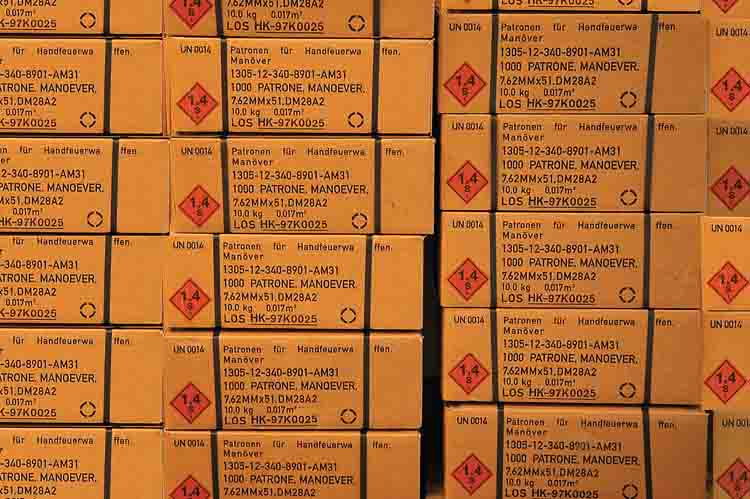
Types of Blank Cartridges
Blank cartridges use a small charge of gun powder as a propellant with a primer to ignite the powder. To contain the propellant, the opening where a bullet would normally be located is crimped shut or sealed with some material that disperses rapidly upon leaving the barrel. This sealing material and hot gas can cause serious injuries at close range.
Some foreign made blank cartridges have a bullet made of wood or plastic in place of a crimp or sealing material. This type of blank uses a muzzle device that is designed to shred the “bullet” as it is expelled from the muzzle. This type of blank cartridge is very dangerous at close range. Most modern blanks usually do not fire any type of projectile.
Firing blanks with a blank adapter restricting the gas flow from the barrel is similar to using a sound suppressor: the firearm is going to get hot fast and dirtier than it normally would.

Grenade Launching Cartridges
Grenade launching cartridges are used to launch specially designed grenades from the barrel of a rifle. Although they may look like blank cartridges, they are loaded with approximately the same powder charge as live ammunition. Therefore, grenade launching cartridges would be VERY dangerous if fired from a weapon fitted with a blank firing device. When in doubt, never fire any unidentified “blanks” with a blank adapter attached. Listed below are typical loads used in blank and grenade launching cartridges to exemplify the significant differences.
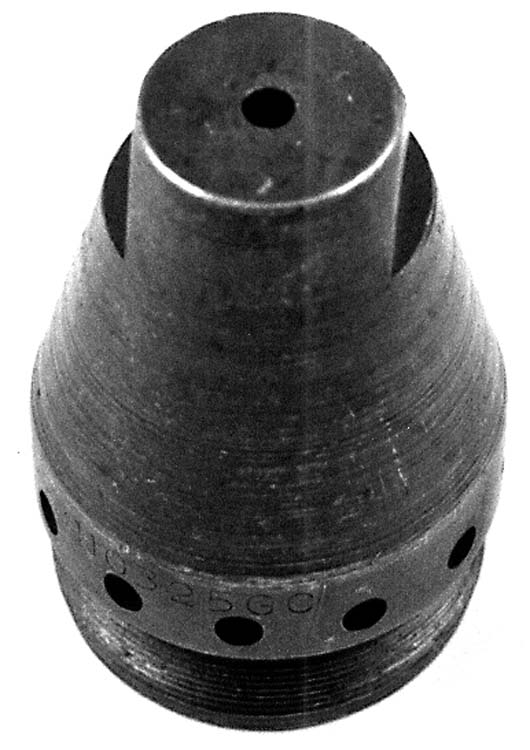
* U.S. Cartridge, Blank, M1909 is loaded with 12 grains of SR4990 powder.
* U.S. Cartridge, Grenade, M3 is loaded with 45 grains of IMR4895 powder.
Flash and Bang
There are probably a large number of machine guns chambered for the 7.62mm NATO cartridge, (.308 caliber Winchester) sitting idle because of the current price of ammunition required to feed them. The number of Miniguns, M14s, FN FALs and the 1919A4 Brownings chambered in 7.62, normally present at machine gun shoots, have been conspicuously less in recent times.
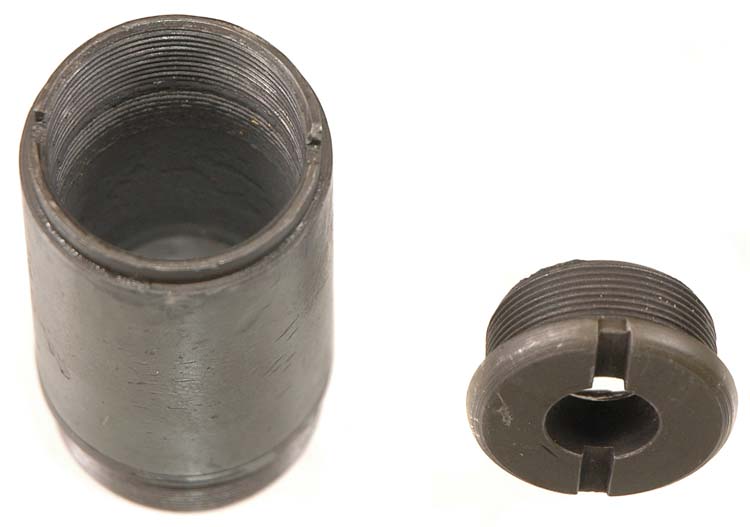
A few years ago surplus 7.62mm NATO ammunition from South Africa, Australia and Great Britain was available in seemingly inexhaustible quantities; at Knob Creek nearly every vendor was selling crates of the ammo for 12 to 13 cents per round. Suddenly, it jumped to over 40 cents a round almost overnight. Oddly, many of those who wisely stockpiled the ammo when it was cheap are reluctant to shoot it despite having many thousands of rounds. This phenomenon of human nature has occurred before. In 1994, when steel-core 7.62×39 was banned and the ammo became scarce; those who had acquired huge lots of it at bargain prices, wouldn’t shoot it because it had become “too valuable.” The price of 7.62x51mm cartridges has continued to increase and for a time was impossible to find in any appreciable quantity. Likewise, reloading components, bullets, powder and primers for hand loading the rounds have become high-demand items, just recently becoming available.
Now there is a solution to the ammo shortage; 7.62mm NATO cartridges that can now be purchased for pennies a round, well sort of. The cartridges are blanks. The blank cartridges have been imported from Germany in fairly large numbers. They are non-corrosive, quite loud and can usually be made to function in virtually any firearm chambered for the 7.62 NATO round with the appropriate blank adapter. The blanks are made of OD colored plastic except for the rims and primers, which are made of cadmium plated steel, and can be policed up with a magnet after being fired.
Outside of Miniguns, one of the main consumers of 7.62x51mm ammunition have been the Browning 1919A4 machine guns, using the Israeli 7.62 NATO caliber conversion. The Brownings will run on the plastic blanks with a few minor alterations. One of the primary items needed of course is a blank adapter.

The 1919A4 Blank Adapter
Blank adapters are now being manufactured for the 1919A4 Browning machine gun, or semiautomatic clones, that will screw directly onto the (early style) two-piece bearing/booster of the 1919. The early booster is the one with the removable end cap. The blank adapter addressed here, looks exactly like an original cap except it has a very small hole in the end and is marked “BLANKS ONLY.”
The standard adapter comes with a .170-inch diameter orifice, which is normally sufficient to run most Brownings on the German blanks. However, the test gun used to evaluate the adapter for this article would not run without an unacceptable amount of stoppages. The solution was quite simple, the original hole was welded up, from the inside surface and drilled to a smaller diameter of .125 inches, this did the trick giving the old Browning enough backpressure to function reliably with the blanks.
In addition to the fixed-orifice blank adapter, the manufacturer offers a similar product that allows the size of the orifice to be manually adjusted. The adapter uses the same Browning two-piece booster cap, but in place of a fixed orifice, has a threaded hole and uses a set screw that is held in place by a jam nut. The replaceable set screw is available drilled in several sizes. This allows the shooter the option of adjusting the size of the orifice to a size that permits function in their particular gun without going through the welding and drilling process.
While the Parkerized blank adapter is aesthetically pleasing, mistakenly leaving in place while attempting to fire live ammunition will have catastrophic results. For this reason, SAR highly recommends painting the adapter red or orange so that is can be readily identified. High temperature paint will be needed as the adapter will get quite hot during firing.
The Front Cartridge Guide
Since the blanks are slightly shorter than live 7.62 NATO rounds, the Israeli front cartridge guide may need to be shimmed up a few thousands. This can be easily done by fabricating a shim from a small strip of steel and attaching it the front 7.62 guide with epoxy. Reportedly, some Brownings will run as is without the shim, but even so the use of the shim will decrease any chance of a failure to feed condition. For use in the Browning, the plastic blanks can be easily loaded in fabric belts or the Israeli steel links using the appropriate loading device.
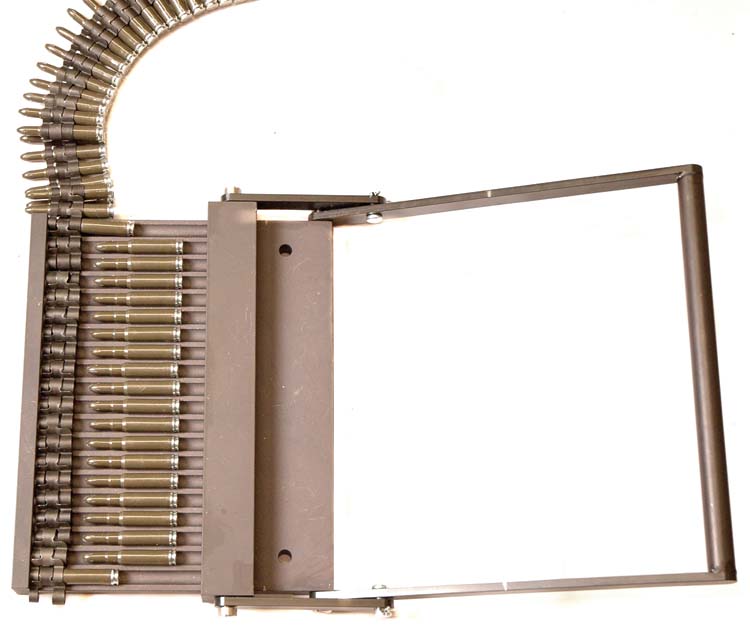
The thrill of firing blanks in a machine gun is similar to firing live ammunition, and is useful for familiarizing new shooters to machine guns, or for having fun in an area where it may be unsafe to fire live rounds. Blanks can also useful for celebrating events like the 4th of July. However, be forewarned that most areas of the country have published ordinances that prohibit the discharging of a firearm, for example within city limits, or within a certain distance from occupied buildings. The authorities will sometimes regard firing blanks the same as discharging live ammunition. The key phrase that may be applied from the local ordinances is “discharging a firearm.”
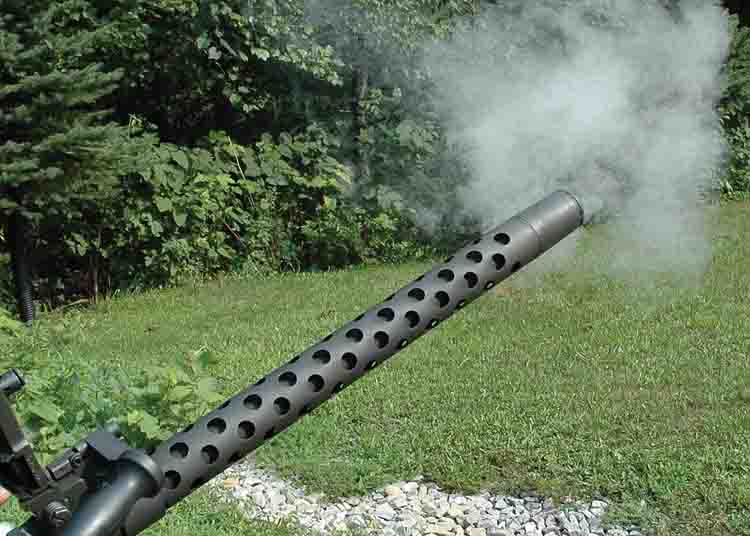
Blank adapters for the 1919A4 Browning
Contact Jon at
Mr.Gadget Gunworks
MrGadget@earthlink.net
7.62x51mm Blank cartridges
Long Mountain Outfitters
(702) 564-0948http://longmountain.com/store/
Veronesi Gunsmithing
(814) 275-4382
Two-piece 1919A4 Boosters
Ohio Ordnance Works Inc.
(440) 285-3481
www.ohioordnanceworks.com
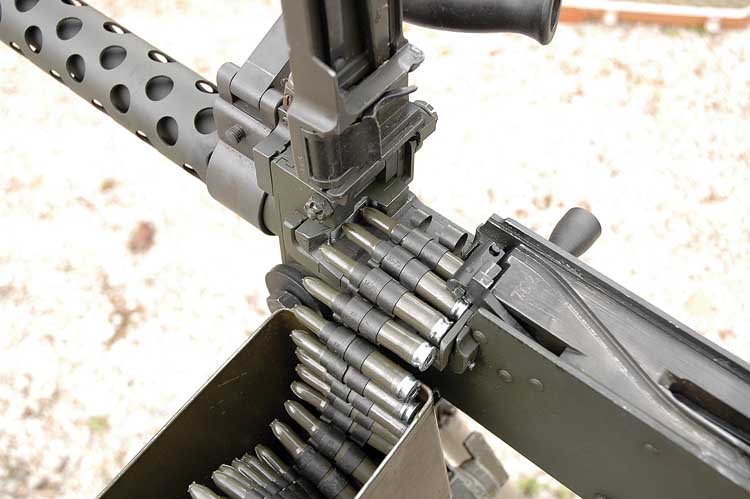
| This article first appeared in Small Arms Review V14N5 (February 2011) |











